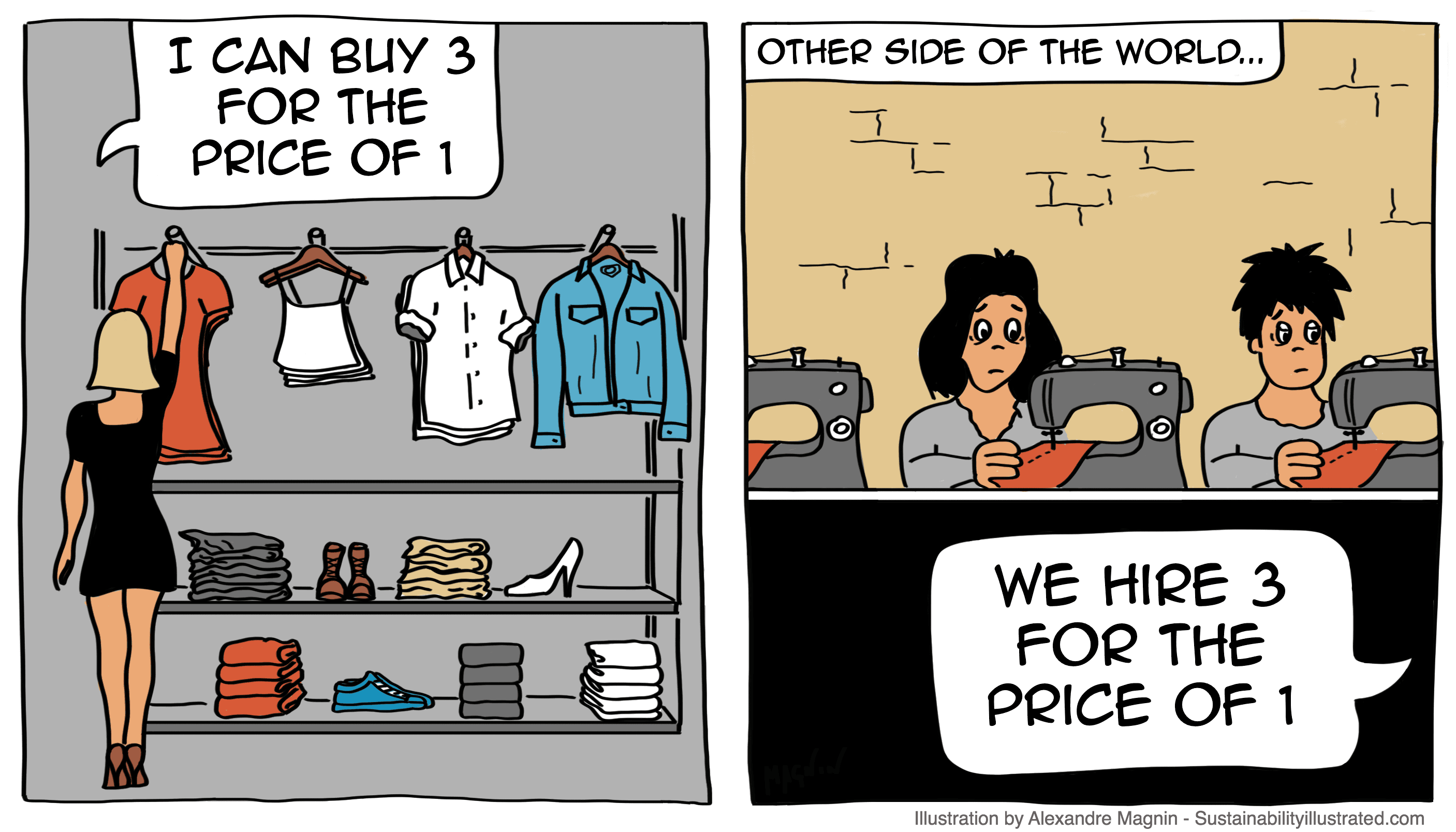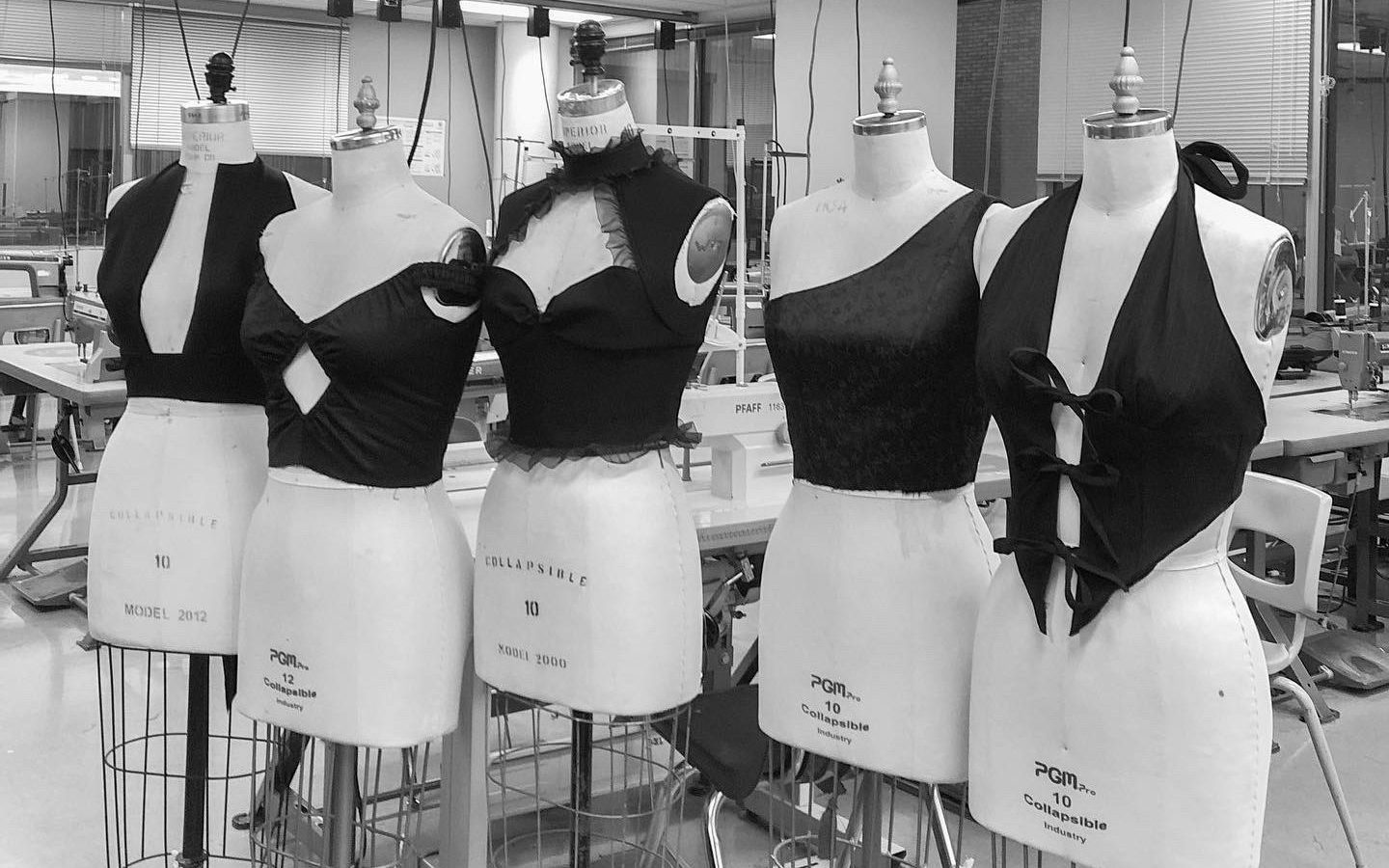
Let’s open the conversation by understanding what fast fashion is at its core and its goals. As the self-explanatory words describe, it’s a fast-paced process of the creation of fashion. Starting from the raw design sketches of the garment, to producing and selling it to hungry consumers. According to greenly.earth, the term first appeared in the 90s when Zara opened their doors. Why is that? For the exact reason that their goal was to go through the manufacturing stages of a garment from A to Z in 15 days. 15 DAYS!!! Clearly, they achieved their goal and introduced the world to a powerful and harmful system. It worked out well for Zara but unfortunately enough, not for our planet earth. The popularity of fast fashion brands come from being able to deliver at such a high speed in a small amount of time, anddd for the cheapest prices. They do so for a couple reasons, the first and crucial one being fast paced trends. As soon as a new look or a new color appears on the runway or is worn by a celebrity and is talked a lot about, that is the signal that in maximum half a year it’ll be in everyone’s closet. The only difference is that this garment seen on the runway cost ten times more to make since it most made under normal human labor conditions and not through sweat and blood. In addition, the fabric quality and production is better, therefore making the overall cost more expensive. However, no ordinary consumer will pay that much to be trendy. 29% of the US population is in the lower income class and 50% are in the middle class. That is obviously more than half the population that wouldn’t be able to afford for their family and themselves trendy and stylish looking clothes for affordable prices. So fast fashion brands so the opportunity and jumped on the business. Nonetheless this is not a reason for fast fashion to exist and to be promoted. It gets over consumed and throws aways 11.3 million tons of clothes per year. Not to mention all the child labor that goes on in this supply chain and the horrible working condition the person who made your shirt is going through. By the way, it is because of globalization that it was possible for fast fashion to abuse third world countries like that.
In comparison, sustainable small designers, produce their own clothes from A to Z, without overstocking to not create waste. Many, additionally, produce through the made to order system making it more available to the customer to do fitting adjustments and produce less waste. It comes of course with a cost that not many are ready to put down. Even though those emerging designers offer garments of quality and of longer durability, not everyone has the opportunity to pay eight to ten times more for a shirt or pair of pants. Sadly, that is the truth to why people rather buy from H&M or Zara. In addition, small designers usually are composed of a small team and cannot produce too many different styles in a short period of time, they have a smaller variety of style which is shifted towards a specific audience and does not attract everyone.
Bibliography:
21, ByInes Gendreupdated on Mar. “IPCC Synthesis Report 2023 : All You Need to Know.” Greenly, 21 Mar. 2023, https://greenly.earth/en-us/blog/ecology-news/ipcc-synthesis-report-2023-all-you-need-to-know.
Dottle, Rachael, and Jackie Gu. “The Real Environmental Impact of the Fashion Industry.” Bloomberg.com, Bloomberg, 23 Feb. 2022, https://www.bloomberg.com/graphics/2022-fashion-industry-environmental-impact/?leadSource=uverify+wall.
Gransaull, Tima Bansal and Gareth. “Why Fast Fashion Has to Slow Down.” MIT Sloan Management Review, 18 Nov. 2021, https://sloanreview.mit.edu/article/why-fast-fashion-has-to-slow-down/.
Hayes, Adam. “Fast Fashion Explained and How It Impacts Retail Manufacturing.” Investopedia, Investopedia, 16 Jan. 2023, https://www.investopedia.com/terms/f/fast-fashion.asp#:~:text=Fast%20fashion%20became%20common%20because,indulge%20these%20instant%2Dgratification%20desires.
Marilisaraccoglobal. “This Is Why Sustainable Fashion Matters – National.” Global News, Global News, 29 Apr. 2018, https://globalnews.ca/news/4173055/sustainable-fashion/.
“Share of Adults in U.S. Middle Class Has Decreased Considerably since 1971.” Pew Research Center, Pew Research Center, 14 Apr. 2022, https://www.pewresearch.org/fact-tank/2022/04/20/how-the-american-middle-class-has-changed-in-the-past-five-decades/ft_2022-04-20_middleclass_01/.
“Who Made Your Clothes? (Cartoon #17).” Sustainability Illustrated, 22 Apr. 2020, https://sustainabilityillustrated.com/en/2018/11/20/clothes-sustainable-fashion-cartoon/.
Zara: Fast Fashion from Savvy Systems, https://learn.saylor.org/mod/book/tool/print/index.php?id=37851.


Leave a comment